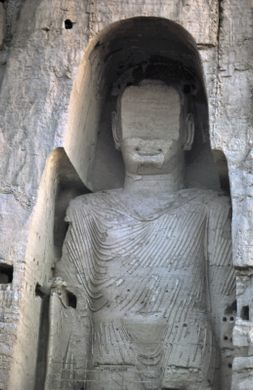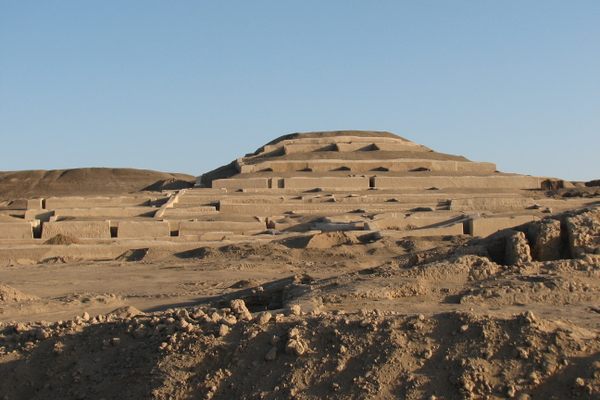Site of the Bamiyan Buddhas
Once an impressive link to Afghanistan’s Buddhist past, now a sad reminder of intolerance towards other cultures.
Few man-made destructions of cultural heritage have been blatant as the bombing of the Bamiyan Buddhas by the Taliban in 2001. Prior to the destruction, the Giant Buddhas had already been worn down from decades of war and neglect, but it only took a few minutes to wipe out the remnants of Afghanistan’s most majestic pre-Islamic site.
Since their creation in the 6th century, the Bamiyan Buddhas have been the largest Buddha statues west of China, and rose majestically out of the otherwise featureless plains of Central Afghanistan. There were two main statues, 53 and 35 meters high respectively, that portrayed a Vairocana Buddha and a Shakyamuni Buddha. A number of smaller Buddha statues adorned the surrounding area. Surrounding the statues were also several undecorated monastic cells, which had been, just as the Giant Buddhas, hewn into the cliffs.
Immediately after the hottest stage of the war against the Taliban in 2002, first steps of reconstructing the Buddhas were made, and the entire area has been thoroughly researched, tagged and mapped for the reconstruction. During this process a number of brightly painted Buddhist caves were rediscovered. In 2008, a previously unknown 19 meter long statue of a Reclining Buddha was uncovered during the search for a semi-mythological 300 meter long Reclining Giant Buddha that is reputedly hidden in the region.
The 300 meter long Buddha was mentioned by a Chinese monk in the 7th century, and given his detailed description of the two standing Buddhas, historians did not entirely dismiss his remarks on the third. If this statue truly existed and was rediscovered, it would be by far the largest Buddha statue in the world.
When the Taliban decided to destroy the Buddhas, it caused an outcry from the international community. Several countries tried to prevent the Taliban from destroying the Buddhas by various offerings, such as buying the statues and relocating them to another country. But since the Taliban were not willing to consider these propositions, the world had to helplessly witness the bombardment of the ancient colossals.
Given the worsening of the security situation in the country within the last few years, it does not seem likely that the Giant Buddhas are to be rebuilt anytime soon. Even UNESCO shattered hopes that the reconstruction of the once world-famous World Heritage Site would take place in the near future, stating that it would likely be a long-term project.
Thus, the bare rock niches, which once held the Giant Buddhas, will for now continue to serve as a stark reminder of the ignorance toward other cultures and the loss of an important survivor of Afghanistan’s pre-Islamic history.
























Follow us on Twitter to get the latest on the world's hidden wonders.
Like us on Facebook to get the latest on the world's hidden wonders.
Follow us on Twitter Like us on Facebook